In the cannabis industry’s fast-paced and innovative environment, psychological safety emerges
not just as a buzzword but as a critical lever for unlocking unprecedented team potential and
business growth. This concept, centered around creating an environment where team members
can freely express ideas, admit mistakes, and voice concerns, has proven to be a game-changer
for organizations aiming for the pinnacle of success and resilience. A workplace where
psychological safety is prioritized is not just more innovative; it’s also more resilient. Employees
in such environments are more engaged, satisfied, and connected to their work and colleagues.
This is especially critical in the cannabis industry, where the collective effort to break new
ground and navigate regulatory complexities requires a united and motivated team.
Investing in leadership development that promotes psychological safety has tangible benefits.
McKinsey’s research underscores that organizations emphasizing leadership skills fostering an
inclusive and safe environment see a 64% improvement in perceiving senior leaders as more
inclusive. This investment in nurturing leadership capabilities like open dialogue, situational
humility, and sponsorship directly correlates with enhanced team performance and innovation
(McKinsey & Company, 2023).
Psychological safety is foundational for not just mental but physical well-being, creativity, and
the overall dynamism of the workplace. Teams that operate in a psychologically safe
environment exhibit higher levels of engagement, satisfaction, and a collective drive toward
achieving common goals. This fosters a culture where calculated risk-taking and creative
problem-solving thrive, significantly benefiting industries marked by rapid change and
innovation, such as cannabis. The ripple effects of such an environment include improved mental
and physical health, reduced stress and anxiety, and a notable decrease in burnout rates, paving
the way for a healthier, more productive workforce (HR Executive, 2023).
Creating this environment requires a strategic approach, beginning with leadership. Leaders must
embody and promote trust, empathy, and openness, encouraging an atmosphere where feedback
is given and received constructively, and diverse perspectives are welcomed and celebrated.
Practical steps include comprehensive leadership development programs, immersive learning
experiences that go beyond traditional training methods, and embedding these skills into the
day-to-day operations and culture of the organization. This approach ensures that psychological
safety becomes a value, not just an aspirational goal.
Tips for Evaluating Psychological Safety:
- Survey the team: An anonymous survey can be a goldmine of insights. Ask direct questions about comfort levels in speaking up, admitting mistakes, and responding to new ideas. It’s like a sneak peek into the team’s heartbeat.
- Observe Behaviors: Sometimes, you need to watch and listen. How do team members react during meetings? Is there hesitation before speaking up, or do ideas flow freely? It’s the unspoken vibes that tell the real story.
- Feedback Loops: Create a regular cadence for giving and receiving feedback. Notice if people are more open over time or holding back. It’s like tuning into a radio frequency—clarity improves with attention.
- One-on-One: Personal check-ins can uncover feelings and concerns that might not surface in a group setting. It’s the difference between reading a summary and diving into the whole story.
Tips for Fostering Psychological Safety:
- Encourage Open Dialogue: Cultivate an atmosphere where open communication is the
norm. Regularly scheduled meetings where team members can voice their thoughts and
concerns are invaluable. - Lead with Empathy: Demonstrate vulnerability as a leader. By sharing your experiences
and challenges, you pave the way for others to do the same without fear. - Prioritize Active Listening: Ensure that team members are met with genuine attention
and consideration when they speak. This reinforces their value to the team and builds
trust. - Celebrate Diverse Thinking: Acknowledge and reward contributions that challenge
conventional wisdom or introduce new perspectives. This reinforces the importance of
innovative thinking. - Invest in Development: Provide access to training and workshops that enhance
communication skills, emotional intelligence, and team dynamics. Investing in your
team’s growth contributes to a more supportive and understanding work environment.
Conclusion:
Whether you’re leading an HR department or managing a team without formal HR support,
creating a psychologically safe workplace is not just beneficial; it’s essential. It’s the foundation
upon which trust, creativity, and collaboration are built. By taking proactive steps to nurture this
environment, you empower your team to thrive, innovate, and contribute to the industry’s
dynamic growth. Let’s commit to making our workplaces not just places of employment but
communities where everyone feels safe, valued, and inspired to achieve their best.
References::
● McKinsey & Company. (2023). What is psychological
safety? https://www.mckinsey.com/featured-insights/leadership/five-fifty-is-it-safe
● HR Executive. (2023). How psychological safety drives workplace dynamics,
well-being. https://hrexecutive.com/how-psychological-safety-drives-workplace-dynamic
s-wellbeing/
● Edmondson, A. (2023). What is psychological safety? Harvard Business
Review. https://hbr.org/2023/02/what-is-psychological-safety
● University of Utah Health. (n.d.). Setting the stage for psychological safety: 6 steps for
leaders. Accelerate. https://accelerate.uofuhealth.utah.edu/resilience/setting-the-stage-forpsychological-safety-6-steps-for-leaders

